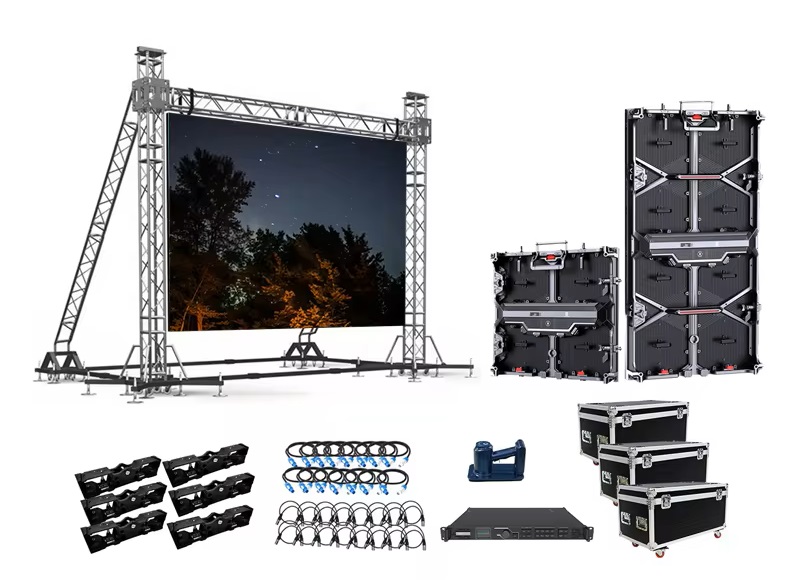कार्ट में कोई प्रोडक्ट नहीं हैं.
उद्योग समाचार
एलईडी डिस्प्ले वीडियो दीवारों पर उच्च तापमान का प्रभाव.
For LED screen users, we must pay attention to the temperature changes of LED screens, because high temperature has the following five effects on LED display screens:
1、 Excessive temperature can cause complete destruction of LED display screens
(1) The operating temperature of LED display screens exceeding the chip’s load-bearing temperature will rapidly reduce the luminous efficiency of LED display screens, resulting in significant light attenuation and damage;
(2) LED display screens are often packaged with transparent epoxy resin. If the junction temperature exceeds the solid-phase transition temperature (usually 125 ℃), the packaging material will transform into a rubber like structure and the coefficient of thermal expansion will increase sharply, leading to open circuit and failure of LED display screens.

2、 An increase in temperature will shorten the एलईडी डिस्प्ले का जीवनकाल
The lifespan of an LED display screen is manifested by its light attenuation, which means that over time, the brightness decreases until it goes out. The lifespan of an LED display screen is typically defined as the time it takes for its luminous flux to decay by 30.
The common causes of LED display screen light decay are as follows:
(1) The defects in LED display chip materials will rapidly proliferate and propagate at high temperatures, until they invade the emitting region, forming a large number of non radiative composite centers, seriously reducing the luminous efficiency of LED displays. इसके साथ ही, under high temperature conditions, micro defects within the material and fast expanding impurities from the interface and the board will also introduce into the luminescent region, forming a large number of deep energy levels, which will also accelerate the light decay of LED display devices
(2) At high temperatures, transparent epoxy resin undergoes denaturation and yellowing, which affects its transparency. The higher the operating temperature, the faster this process will occur, which is another major reason for the light attenuation of LED display screens.
(3) The light attenuation of fluorescent powder is also a major factor affecting the light attenuation of LED display screens, as the attenuation of fluorescent powder is very severe at high temperatures.
इसलिए, high temperature is the main root cause of LED display screen attenuation and shortened lifespan.
The light attenuation of different brands of LED display screens varies, and usually LED display screen manufacturers will provide a standard set of light attenuation curves. The attenuation of luminous flux caused by high temperature in LED display screens is irreversible. The initial luminous flux of LED display screens is referred to as the luminous flux before the irreversible attenuation occurs.
3、 An increase in temperature will reduce the luminous efficiency of LED displays
The reasons why temperature affects the light efficiency of LED display screens include the following aspects:
(1) As the temperature increases, the concentration of electrons and holes will increase, the bandgap width will decrease, and the electron mobility will decrease.
(2) As the temperature increases, the probability of radiative recombination between electrons and holes in the potential well decreases, resulting in non radiative recombination (generating heat), thereby reducing the internal quantum efficiency of LED displays.
(3) The increase in temperature causes the blue light peak of the chip to shift towards the long wavelength direction, causing a mismatch between the emission wavelength of the chip and the excitation wavelength of the fluorescent powder, and also resulting in a decrease in the external light extraction efficiency of the white light LED display screen.
(4) As the temperature increases, the quantum efficiency of the fluorescent powder decreases, the light output decreases, and the external light extraction efficiency of the LED display screen decreases.
(5) The performance of silicone is greatly affected by environmental temperature. As the temperature increases, the thermal stress inside the silicone increases, leading to a decrease in the refractive index of the silicone, thereby affecting the light efficiency of LED display screens.